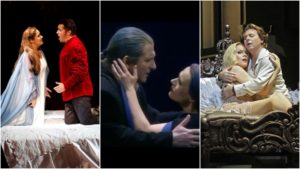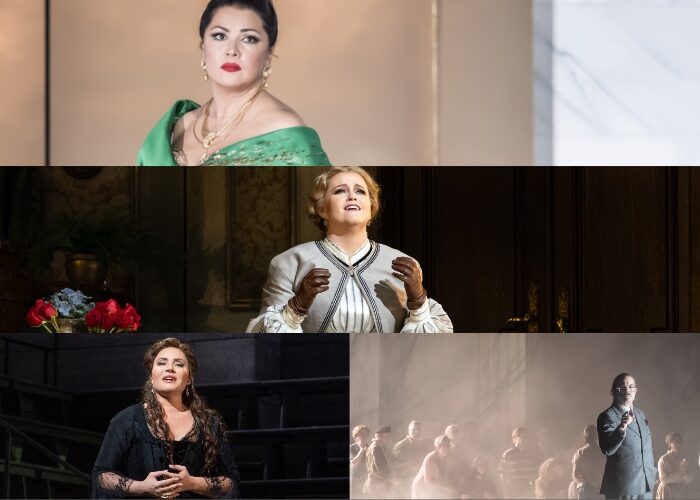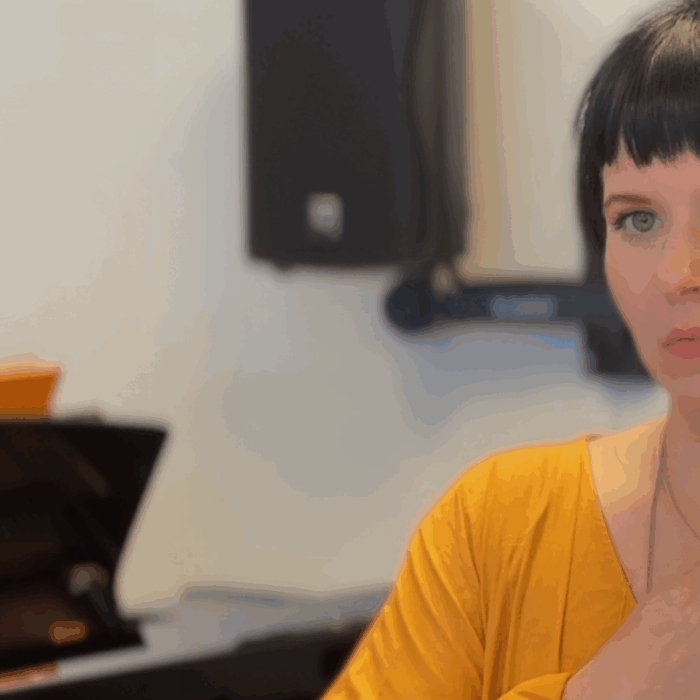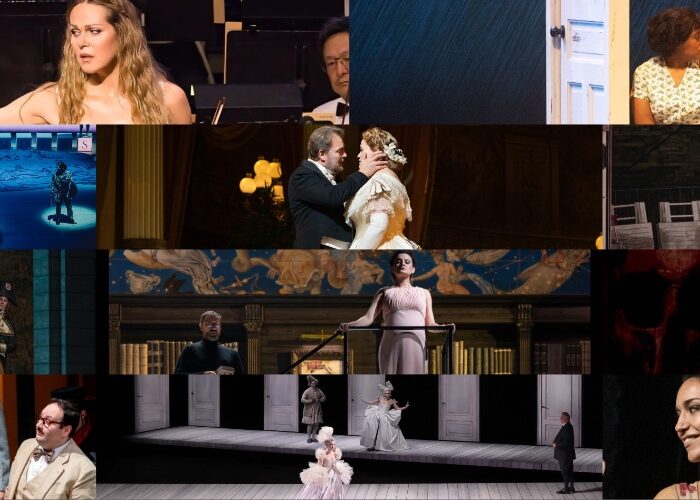
The 14 Greatest Love Duets In Opera
By David SalazarIt’s Valentine’s Day, the day to cherish a significant other. Last year we took a cynical look at the holiday, but not this year.
Opera is rife with love, almost every single plot in every single work has some communion of two persons in that blissful word. In fact, love in opera has incited just as many battles and tension as anything else.
But love has also inspired some of the most breathtaking musical moments ever conceived. As we celebrate the day of love, we turn to 14 of the greatest love duets ever written for the artform. As always, there will be some missing and we are excited to see which ones you felt should also be considered among the best of all time. Let us know in the comments.
Without further ado, let’s look at the greatest love duets ever conceived.
“Gia nella notte densa” – Otello
Verdi wrote his fair share of love duets, but most people wouldn’t consider many of them to be truly great. Except for the two on this list.
The greatest of these is undeniably the one from his last great tragedy and it is undeniably one of the most emotionally gripping every committed to music. Unlike most other entrants on this list, filled with intense passion, Verdi’s approach is more of mature and tenderness. Desdemona and Otello don’t talk so much about how much they love each other, but WHY they love each other, adding a depth and profundity to the moment. The music is gentle throughout and even its moment of passionate eruption, the kiss motif, is subdued in its release.
And he does all this without ever having the two voices fully join in together until the very end of the duet.
“Te io sto” – Un Ballo in Maschera
Prior to this duet, Verdi managed a few other structured duets that were fine musically, yet never rose above that. To be blunt, Verdi doesn’t have a truly great love duet before this one. What makes this one truly imaginative is how he takes the double duet structure and manipulates it to explore the development of emotions between Amelia and Gustavo. We start with her rejecting him and then slowly see her transform until she declares her love for him in the most heavenly of music Verdi could muster. From there the two engage in a cabaletta, the passion aflame. Amelia’s reservations remain and yet she joins in to sing with Gustavo in the reprise of the cabaletta theme, indicating complex contradictory emotions.
Liebesnacht – Tristan und Isolde
It’s hard to simply state one particular passage as THE love duet because the reality is that the entire sequence of events of Act two of Wagner’s great masterwork really explores the passion between these two lovers from a wide range of angles. We get the agitated excitement of Tristan’s arrival with the two simply throwing caution to the winds. Then it all calms down and turns more inward and reflective as they ponder the beauty of night. We enter pure bliss with the lovers and it slowly but surely ramps up to some of the most erotic music ever created. You could go so far as to say that Wagner depicts the sexual act musically. You can literally feel the sexual tension building in the violins as the music rises to its climax, the two voices going from coherent lines to more sexual shouts one over the other, until a dissonant chord destroys the sensation of sexual and emotional fulfillment.
This sequence has it all.
Act 3 – Lohengrin
After the famed wedding march, we see the two lovers engage in gentle and tender expressions of love. First, we get a sequence that is Wagner at his most Italianate, the voices joined together in harmonic bliss. The scene eventually goes awry, but not before we feel the expansiveness of Lohengrin and Elsa’s love for one another. For those keeping track, Verdi definitely knew about this duet and you can tell simply from hearing Otello and Desdemona’s own sweet encounter at the top of the opera.
Act 1 – Die Walkure
The entirety of Act 1 might be considered an extended duet as Wagner never explored the development of love more beautifully than at the start of his second Ring opera. Simply put, we see these two characters meet and then fall in love with the single stroke of a solo cello. From there, the contact between them develops further and explodes in a lengthy climax at the end of the act. That duet features one aria after another between the two characters. While they never sing together at once, the exchange between them is magical and eventually reaches a visceral climax as they run off.
“Sulla tomb ache rinsera… Verano a te” – Lucia di Lammermoor
The perfect example of the bel canto love duet, Donizetti’s expression of love between Edgardo and Lucia is quite simple, focused more on vocal and melodic freedom than harmonic innovation. The two lovers commiserate over Edgardo’s pained past before pledging eternal love to one another. The beauty of this duet is how the music latches onto the listener and never lets go.
“Tornami a dir” – Don Pasquale
In just four or so minutes, Donizetti expresses the profoundness of love between Norina and Ernesto. Again, as with the “Lucia,” the simplicity of the structure is everything. But unlike most other duets, where the composer focuses on narrative progression and revelation for maximum impact, Donizetti lets the emotion take over. Throughout the duet, the two voices join together in perfect harmony and the listener is allowed to be transported with their bliss. You don’t necessarily need to even bother with the text, but just let the tenderness of the moment take over.
“O Soave fanciulla” – La Boheme
The most famous of all love duets in opera, the duet actually starts the moment Rodolfo touches Mimì’s hands and proclaims how cold they are. From there, the two fall in love instantly and their union is expressed in this final segment of the mini three-act structure. The aria explodes with passion from the outset, calming down before eventually settling into the union of the final note. It is sweet, gentle, passionate, and everything in between.
“Mario! Mario!” – Tosca
Tosca and Mario’s scene in Act one is elaborate in how many dramatic beats it hits on and how it manages to explore the title character in depth. We learn of her responsibilities as an artist, her dreams, her jealousy, but above all, her deep passion for her Mario.
Moreover, it allows us to explore the nature of their relationship. She is in some ways, the driving force between them and he the calming one. She makes the plans and he listens. But when she succumbs to her jealousy, Mario comforts her with the sublime “Quale occhio al mondo,” one of Puccini’s most elegant and passionate melodies. From there we get one melodic development after another all the way to the end of the duet.
“Bimba dagli occhi pieni di malia” – Madama Butterfly
Puccini’s greatest love duet is also his most unfortunate. It is as passionate as they come, the intensity of its impact coming from its expansiveness and sense of direction. We feel Pinkerton’s drive from the start but also feel Cio-Cio San’s reticence. Then slowly but surely, she gives in fully and the two join together in escalating passion.
“O Nuit d’ivresse” – Les Troyens
You can find similarities between this duet and the Otello and Desdemona one in its tone and character. It’s as gentle as any love duet, the singing mostly in the piano dynamic marking throughout. The characters venerate the Gods throughout, giving the duet a magical and sublime quality only a few other such passages possess.
“Toi! Vous!… Oui, c’est donc moi!” – Manon
Manon and Des Grieux’s reunion in the Saint-Suplice showcases the two lovers at odds and eventually joining together for passionate reconciliation. The scene moves from rejection to seduction and eventually full-on passionate reconciliation. Here, Massenet shows his economy of thematic development allowing one major melody to explore a wide range of emotions.
“Nuit d’hyméné” – Roméo et Juliette
How could we not include a scene from arguably the most famous of all love stories? One could argue that Gounod’s finest musical creation is one extended love duet from start to finish, the two leads engaged in no less than five “duets” throughout the opera. But their night of love, its hymn-like melody, and the picturesque painting of the daybreak make it stand out amongst the others. This duet has passion and tenderness in equal measure.
Final Scene – Ariadne Auf Naxos
The final moments of “Ariadne Auf Naxos” are spiritual bliss. Strauss’ ability to build emotional power is second to none and he luxuriates his endless melodic invention throughout this glorious climax, rivaling Wagner’s own mastery in the “Tristan und Isolde” love sequence. The tension just builds and builds, the anticipation growing.
Which love duets do you feel are missing from this list? Let us know in the comments below!
Categories
Special Features

